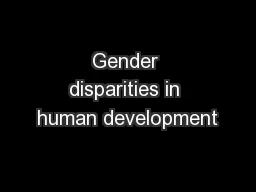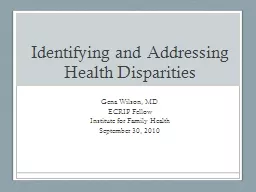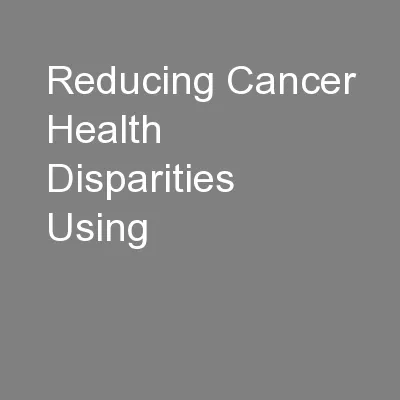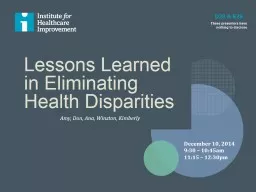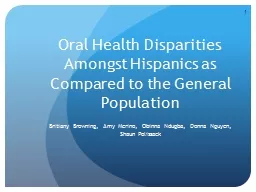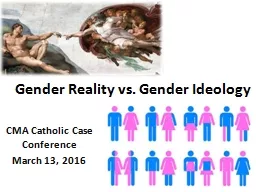PPT-Gender disparities in human development
Author : cheryl-pisano | Published Date : 2016-08-09
Side event on the margins of the 59 th Commission on Status of Women Human Development Report Office Milorad Kovacevic Chief of Statistics Introduction Human development
Presentation Embed Code
Download Presentation
Download Presentation The PPT/PDF document "Gender disparities in human development" is the property of its rightful owner. Permission is granted to download and print the materials on this website for personal, non-commercial use only, and to display it on your personal computer provided you do not modify the materials and that you retain all copyright notices contained in the materials. By downloading content from our website, you accept the terms of this agreement.
Gender disparities in human development: Transcript
Side event on the margins of the 59 th Commission on Status of Women Human Development Report Office Milorad Kovacevic Chief of Statistics Introduction Human development is broadly defined as a process of enlarging peoples choices and freedoms to live long healthy and creative lives to advance other goals they have reason to value and to engage actively in shaping development equitably and sustainably on a shared planet. among People with Disabilities: . Core Health Indicators. Knowledge for Equity . November 13-14, 2012. Silver Spring, Maryland. The findings and conclusions in this presentation have not been formally disseminated by the Centers for Disease Control and Prevention and should not be construed to represent any agency determination or policy.. Gena. Wilson, MD. ECRIP Fellow. Institute for Family Health. September 30, 2010. Source: U.S. Census Bureau, Population Division. National . Healthcare Disparities . Report . 2009. “. Disparities in Health and Health care persist in many areas. Social Determinates Perspectives. Hyman Scott, MD, MPH. Research Scientist. Bridge HIV, San Francisco Department of Public Health. Disclosures. I have no financial disclosures.. The views expressed herein do not necessarily reflect the official. The Promise. . of Health Naming . & . Moving Research & Action. . November 15, 2011. Presented by:. Lisa Cacari Stone, PhD. Community Engagement Core . Shiprock, NM. Hispanics had the worst rates on 4 indicators. Foundation of Gender Concepts:. What . I. s Gender?. Gender . refers to the social differences between males and females that are learned, and though deeply rooted in every culture, are changeable over time, and have wide variations both within and between cultures. . Chartbook on Health Care for Hispanics. October 2015. This presentation contains notes. Select View, then Notes page to read them.. Goals of the Chartbook on Health Care for Hispanics. Commemorates the 30th Anniversary of the Report of the Secretary’s Task Force on Black and Minority Health (Heckler Report). Anne GrEgory, Ph.D.. annegreg@rutgers.edu. Rutgers University. NJ Principals and supervisors association. Workshop in . 7. parts. Part . 1:. Overview of national issues in school discipline. We will discuss contributors to school discipline . Community-Engaged Researc. h . Terrance . L. Albrecht, Ph.D.. KCI . Associate Center Director, Population Sciences. Leader, KCI Population Studies and Disparities Research . Program. Professor and Division Chief, Population Sciences. Helen Lee. Senior Research . Associate. , . MDRC. h. elen.lee@mdrc.org. Scientists Sound the Alarm on Obesity Early. 2. “It is clear that weight control is a major public health problem. ” . Experts at the American Public Health Association Annual Meetings declare obesity as problem #1. Amy, Don, Ana, Winston, Kimberly. D29 & E29. These presenters have . nothing to disclose. December 10, 2014 9:30 – 10:45am . 11:15 – 12:30pm. Session Objectives. Explore ideas to move from identifying health disparities in . Britiany. . Browning, Amy Merino, . Obinna. . Ndugba. , Donna Nguyen, Shaun . Polissack. 1. What is a Health Disparity?. Dis·par·i·ty. /. diˈsparitē. /. A difference in health outcomes across various groups of the population, often linked to economic, social, or environmental disadvantages.. CMA Catholic Case Conference. March 13, 2016. 2007. 2014. Feb 2016. Summer 2015. 58 Gender Options . Feb 2015. May 2012/ July 2013/ Oct 2015. Transgender at five/six/eight. 1999. March 2016. Academics. Mind the Gap: How college health services can use assessment to identify health disparities, health inequities, and barriers to accessing care Susan R. Hochman University Health Services Learning Objectives and Social Justice in . Integrated Behavioral Health Care. Module 5 . Roseanna . McCleary. , PhD. California State University, Bakersfield. Learning Objectives. Increase knowledge of health disparities and health equity and the context in which...
Download Rules Of Document
"Gender disparities in human development"The content belongs to its owner. You may download and print it for personal use, without modification, and keep all copyright notices. By downloading, you agree to these terms.
Related Documents

